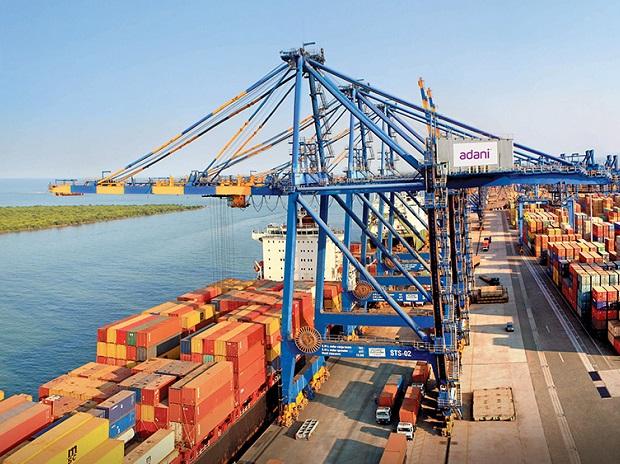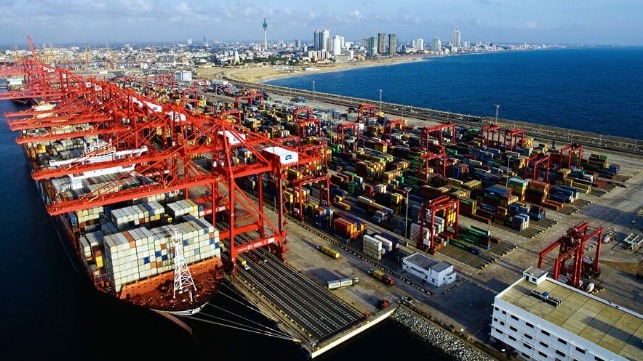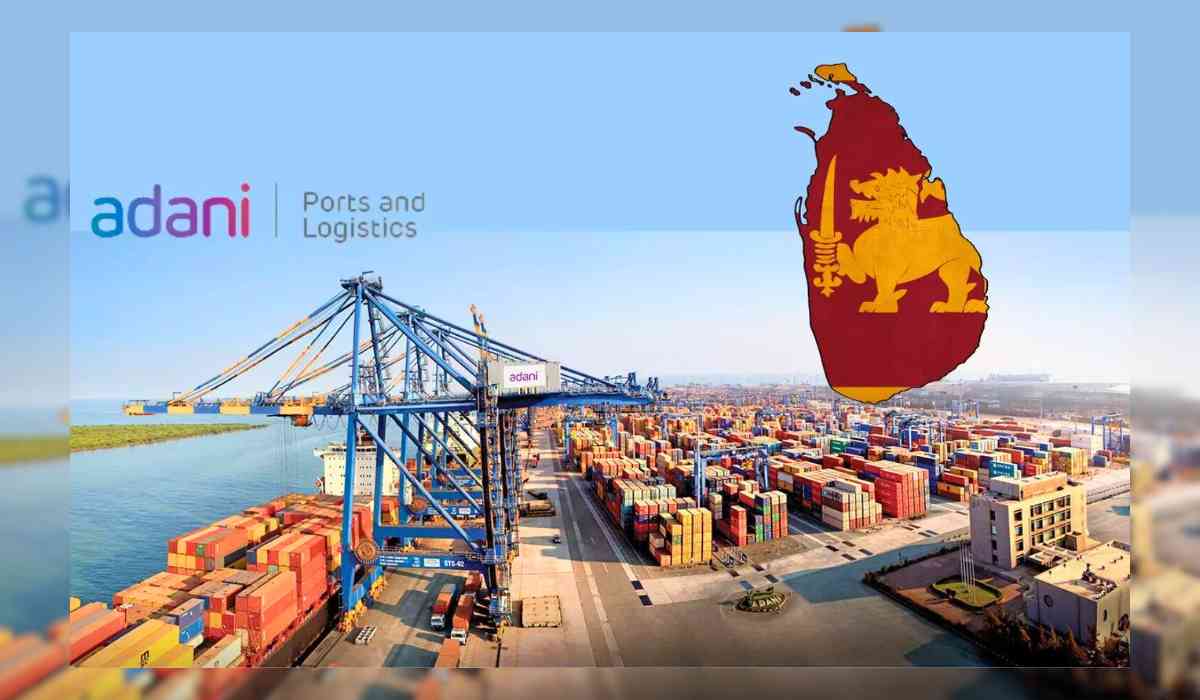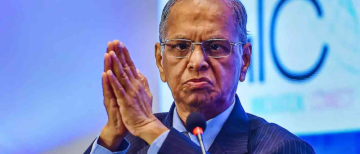A significant political development in which an Indian company has secured a historic $700 million agreement to build a crucial deep-sea container terminal in Sri Lanka was agreed. This move was seen as a response to China's increasing influence in the region. The Sri Lanka Ports Authority (SLPA) has revealed the details of the agreement, which involves constructing a state-of-the-art terminal next to a Chinese-operated jetty worth $500 million in the bustling port of Colombo.
This agreement represents the largest foreign investment in Sri Lanka's port sector to date. Adani Group, the Indian company, will partner with the local conglomerate, John Keells, and the Sri Lankan government-owned SLPA. Adani will hold a majority controlling stake of 51%, while John Keells will have a 34% share in the joint venture known as the Colombo West International Terminal.
The forthcoming container jetty will span an impressive 1.4 kilometres, with a depth of 20 meters, and the capacity to handle 3.2 million containers annually. The initial phase, featuring a 600-meter terminal, is set to be completed within two years. After 35 years of operation, ownership will revert back to Sri Lanka.
Efforts to grant India access to the strategic Colombo port have been underway for several years but faced obstacles when trade unions associated with the ruling coalition opposed the idea of providing New Delhi with a partially constructed terminal within the port. As a result, the government invited India to construct an entirely new terminal adjacent to the Chinese-operated Colombo International Container Terminal (CICT).

Situated in the Indian Ocean between the bustling hubs of Dubai and Singapore, Colombo's ports hold significant geopolitical importance. Notably, the presence of two Chinese submarines at the CICT in 2014 raised concerns in India, as they view neighbouring Sri Lanka to be within their sphere of influence. Consequently, Sri Lanka has declined further requests for Chinese submarines to be stationed there.
In a pivotal turn of events in December 2017, Sri Lanka, unable to meet the obligations of a substantial Chinese loan, ceded control of the southern Hambantota port to China Merchants Port Holdings. This port, located along the world's busiest east-west shipping route, was leased to the Chinese company for an unprecedented 99 years, prompting concerns about Beijing's use of "debt traps" to exert influence abroad.
Both India and the United States have expressed concerns about China's foothold in Hambantota, as it could potentially provide a military advantage in the Indian Ocean. This underscores the complex political dynamics at play in the region.
Additionally, the U.S. International Development Finance Corporation (DFC) has announced significant financing of $553 million for a Colombo port terminal project, which is partially owned by India's Adani Group. This marks the first entry of an Indian company into this sector. The west container terminal of the port, where Adani Group holds a 51% stake, is also home to a terminal operated by China Merchants Port Holdings Co Ltd.
DFC's commitment to the West Container Terminal (WCT) will substantially enhance its shipping capacity, fostering economic prosperity for Sri Lanka. Importantly, this infusion of capital will not contribute to the nation's sovereign debt. DFC CEO Scott Nathan emphasized the positive impact, stating, "DFC’s commitment of $553 million in private sector loans for the WCT will expand its shipping capacity, creating greater prosperity for Sri Lanka – without adding to sovereign debt – while at the same strengthening the position of our allies across the region."

During a challenging period marked by Sri Lanka's worst financial crisis in over seven decades, with record low foreign exchange reserves leading to a contraction of the economy by 7.8% in 2022, India extended critical support. Approximately $4 billion in swaps and credit lines were provided to facilitate the import of essential commodities like fuel, medicine, and fertilizer.
In the geopolitical context, both India and China are actively vying for influence in this strategically located island nation, which is situated near key shipping routes. The ownership structure of the WCT consists of a 34% stake held by Sri Lankan conglomerate John Keells Holdings, with the remaining portion being under the control of the state-run Sri Lanka Ports Authority (SLPA).
In conclusion, the financing injection from the U.S. International Development Finance Corporation is poised to bring about significant enhancements to the Colombo port terminal, benefiting both Sri Lanka's economic landscape and regional alliances. This move is particularly timely given the economic challenges the nation has faced in recent times.
Image Credits: X
Ⓒ Copyright 2023. All Rights Reserved Powered by Vygr Media.

























